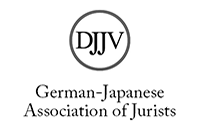Die Neuregelung von Verschmelzung, Spaltung sowie Gründung von Holding-Gesellschaften durch Aktientausch und -übertragung
Abstract
Against the background of a lingering economic crisis in Japan and increasing international competition, the need of Japanese companies for easier and more flexible procedures for company reorganization became increasingly acute in recent years. To meet this necessity, Japanese legislators undertook three important law reforms. First, in 1997 they reformed the legal rules of company amalgamation and implemented a simplified amalgamation procedure. In 1999 they introduced a new procedure for exchange and transfer of shares to facilitate the establishment of holding companies. Finally, in 2000 they reformed the rules of company separation. This paper explains the purpose of these reforms, describes the important changes, and outlines the present procedures of amalgamation, separation, transfer, and exchange of shares according to Japanese law.
The Japanese Commercial Code provides for two types of amalgamation procedures, the amalgamation to absorption (kyûshû gappei)and the amalgamation to consolidation (shinsetsu gappei). Because of tax benefits, in most instances companies choose the procedure of amalgamation to absorption to carry out a merger. Unfortunately, the 1997 reform of the relevant provisions in the Commercial Code did not deal with all important issues subject to considerable dispute concerning the requirements and the execution of an amalgamation. For instance, there is an ongoing debate about the legitimacy of “cash-out mergers”, which is being negated by a majority of jurists. Furthermore, the prevailing opinion still denies the legitimacy of an amalgamation between a foreign company and a Japanese company according to Japanese law.
When comparing the Japanese amalgamation law to the German amalgamation law, one can find a few characteristic features of Japanese law. First, since the reform of 1997, in a merger between a large and apparently dominating company on one side and a quite small company on the other, Japanese law provides for a simplified procedure – in contrast to the regular procedure – which does not require the approval of the general meeting of shareholders of the dominating company. The idea behind this is that the impact of the merger on such a company is expected to be slight, and the interests of the shareholders and creditors are not at risk. Second, through the same law reform, the reporting duties of the amalgamating companies to shareholders and creditors have been greatly extended. Third, the measures of legal protection of shareholders and creditors in Japanese law differ distinctively from those in German law. Fourth, for a long time the financial statement of the amalgamation did not have to follow internationally common accounting standards. And fifth, no particular rules for triangle mergers exist in Japan for ordinary companies.
Japanese law also provides for two types of company separation, the separation by new incorporation (shinsetsu bunkatsu)and the separation by absorption (kyûshû bunkatsu). In many aspects, the law of company separation was updated by the law reform in 2000.
The introduction of the procedures of exchange of shares and transfer of shares to facilitate the establishment of holding companies in 1999 followed by and large the model of American law.
In all these three types of procedures for the reorganization of companies, one major issue is whether the interest of minority shareholders is sufficiently protected by Japanese law. This is a highly disputed matter. The author’s opinion on this issue is that, in general, minority rights were neglected. Furthermore, he points out that one could not expect the recent reforms of company law to eliminate the economic crisis in Japan, and that expectations in Japan as to a modernization of company law were generally too high.
(The Editors)






